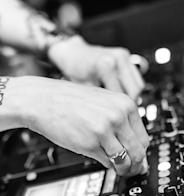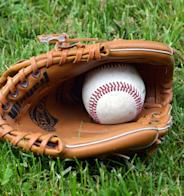Ad
related to: Austin, Texas, United StatesFind Discounts on the Best Austin Tx. Tripadvisor Helps You Spend Less. Tripadvisor Always Has Low Prices on Hotels in Austin. Spend Less Here.
Search results
News about Texas, Temple, heat wave
News about Texas Nationalist Movement, Texas Republican Party, Texas GOP
News about All-Area team, sprints, nominees
Also in the news
Events
- MAY25MusicTaking Back SundayStubb's Waller Creek Amphitheater7:00 PMMAY25
 MiscellaneousBull Y Los BufalosCome and Take It Live7:00 PM
MiscellaneousBull Y Los BufalosCome and Take It Live7:00 PM - MAY25MusicMariah the Scientist - to Be Eaten Alive TourEmo's Austin7:00 PMMAY25
 MusicKublai KhanEmpire Control Room8:00 PM
MusicKublai KhanEmpire Control Room8:00 PM - MAY25
 MiscellaneousRadoEmpire Control Room9:00 PMMAY28
MiscellaneousRadoEmpire Control Room9:00 PMMAY28 SportsRound Rock Express Vs. El Paso ChihuahuasDell Diamond7:05 PM
SportsRound Rock Express Vs. El Paso ChihuahuasDell Diamond7:05 PM
Austin, the southernmost state capital of the contiguous 48 states, is located in Central Texas on the Colorado River. Austin is 146 miles (230 km) northwest of Houston, [57] 182 miles (290 km) south of Dallas [58] and 74 miles (120 km) northeast of San Antonio.
- List of People From Austin, Texas
This is a list of notable past and present residents of the...
- Colorado River
The Colorado River is an approximately 862-mile-long (1,387...
- Williamson County, Texas
Confederate statue at Williamson County courthouse A part of...
- Austin Community College
The Austin Community College District (ACC) is a public...
- Moonlight Towers
The moonlight towers in Austin, Texas, are the only known...
- Paramount Theatre
The Paramount Theatre is a live theatre venue/movie theatre...
- List of People From Austin, Texas
4 days ago · Discover Austin, the Live Music Capital of the World, with vibrant entertainment, art, culture, cuisine and outdoor experiences. Find places to stay, things to do, events, nightlife, outdoor activities and more in this vibrant city.
- Austin Events Calendar for April & May 2024 | Visit Austin, TX
- Austin Concerts & Live Music | Visit Austin, TX
- Things To Do in Austin, TX This Weekend | October 13 - October 15
- Music Festivals in Austin, TX | Austin Music Scene, Shows, Events & More
- Austin Events Calendar for August & September 2024 | Visit Austin, TX
- Austin eNewsletter | Austin, TX Hotels, Events, Attractions, Things To Do & More
- Austin Events Calendar for October & November 2023 | Visit Austin, TX
- Overview
- History
- The contemporary city
Austin, city, capital of Texas, U.S., and seat (1840) of Travis county. It is located where the Colorado River crosses the Balcones Escarpment in the south-central part of the state, about 80 miles (130 km) northeast of San Antonio. Austin’s metropolitan area encompasses Hays, Williamson, Bastrop, and Caldwell counties, including the cities of Roun...
The state’s fourth largest city, Austin originated as the riverside village of Waterloo, in a buffalo-hunting region occupied by Tonkawa and Comanche peoples. In 1839 it was selected by scouts as the site for the permanent capital of the Republic of Texas and renamed to honour Stephen F. Austin, father of the republic. By 1840 Austin was incorporated, with 856 residents. When Mexican invasion threatened Texas in 1842, the government moved to Houston, but the town’s citizens, determined to keep Austin the capital, staged the so-called Archive War, forcibly retaining government records. The government returned to Austin in 1845, the year in which Texas was admitted to the United States. Austin’s pink granite State Capitol (1888), modeled after the U.S. Capitol, succeeded an earlier structure (burned 1881).
Britannica Quiz
U.S. State Capitals Quiz
The city flourished as a trading centre for ranchers and farmers after the arrival of the Houston and Texas Central Railroad and the construction of a permanent bridge across the Colorado River in 1871. A flood in 1900 caused widespread destruction, including the collapse of the bridge. With the harnessing of the river for flood control and power in the early 20th century, industry began to develop. Austin experienced dramatic growth during the 1990s, fueled mainly by high-technology industries.
Business, research and development, and manufacturing concerns involving computers, computer equipment, semiconductors, telecommunications, software, and biotechnology are among the city’s major employers. Government, education, and health care services are also primary economic factors. Railroads play an important role in trade, transporting most international cargo to international ports. Austin-Bergstrom International Airport opened in 1999 on the site of a former U.S. Air Force base.
The city’s population is ethnically diverse. Less than half of its people are of European descent, more than one-third of the population is Hispanic, and African Americans and Asian Americans each constitute slightly less than one-tenth of the population. Austin’s educational resources, particularly the University of Texas (1881), which has its main campus there, have contributed to growth. Other educational institutions include Huston-Tillotson College (1875), St. Edward’s University (1885), Concordia University at Austin (1926), and Austin Community College (1972).
At dusk, portions of the central city are lighted by “artificial moonlight” from mercury vapour lamps atop 17 165-foot (50-metre) tall towers (erected in 1894). The O. Henry Home and Museum is housed in what was O. Henry’s residence from 1893 to 1895, and the Elisabet Ney Museum, situated in her former studio, houses a collection of Ney’s sculptures; Ney created many life-size figures, including those of Stephen F. Austin and Sam Houston standing in the national and state capitols. The French Legation Museum (1841) was built by French chargé d’affaires Alphonse Dubois de Saligny, who was to represent the French government in the Republic of Texas; if he occupied the house at all, it was probably for a very short period. The Lyndon Baines Johnson Library and Museum (1971), situated on the campus of the University of Texas, contains archives, documents, and memorabilia of Johnson’s public career. The Bob Bullock Texas State History Museum (2001) showcases exhibits on the state’s history. The Jack S. Blanton Museum of Art, on the university campus, has a notable collection of Latin American art. Other facilities include the Austin Museum of Art, the Mexic-Arte Museum, and the Umlauf Sculpture Garden & Museum. The city supports an array of cultural organizations including a professional symphony orchestra, an opera company, and a ballet troupe, as well as a variety of art galleries and theatre groups.
Are you a student? Get Britannica Premium for only 24.95 - a 67% discount!
Learn More
Austin is known for its vibrant music scene. Formerly a centre of country and blues music, it now celebrates a variety of genres including rock, folk, jazz, and Latino music. More than 100 live music venues are centred primarily around the Warehouse District and Sixth Street, and a long-running public television series, Austin City Limits, showcases musical talent. Dozens of local recording studios and record labels make significant economic contributions. The South by Southwest Conference, devoted to music, film, and interactive media, is held each year in March. The city is also a favourite moviemaking location, and it is home to many artists associated with music and film.
- The Editors of Encyclopaedia Britannica
People also ask
Where is Austin Texas located?
How did Austin get its name?
Is Austin Texas a good place to live?
Where did Austin Texas come from?
Things to Do. Restaurants. Flights. Vacation Rentals. Cruises. Rental Cars. Forums. United States. Texas (TX) Austin. Things to Do in Austin, TX - Austin Attractions. There's lots to explore in Austin. Paddleboard in Lady Bird Lake, visit Texas' State Capitol, and bar hop through Rainey Street. Bat watching is on from May till September.
Discover Austin, the state capital of Texas, with its quirky culture, live music, culinary scene and natural attractions. Find out the best time to visit, the top things to do, the best neighborhoods and the day trips from this Lonely Planet web page.
- Barton Springs. Visit website Get directions. During the hot Texas summer, Barton Springs is a popular landmark with locals and visitors. Barton Springs actually comprises four natural springs.
- Greetings From Austin Mural. Get directions. Taking a photo with the Greetings From Austin Mural is a Texas bucket list activity! This mural resembles a postcard with the phrase "Greetings From Austin" and images of local landmarks painted within the letters of Austin.
- Bullock Texas State History Museum. Visit website Get directions. Are you looking for an Austin landmark that will teach you more about history relating to the city and the state of Texas?
- Congress Avenue Bridge. Visit website Get directions. Officially called the Ann W. Richards Congress Avenue Bridge, this landmark sits across the Colorado River and connects Downtown Austin to the Bouldin Creek neighborhood.
Located in Central Texas on the eastern edge of the American Southwest, Austin is the capital of the state of Texas, the Lone Star State. The city dates back to the 1830s, when the first Anglo-American settlers arrived in the area, then part of Mexico.









































